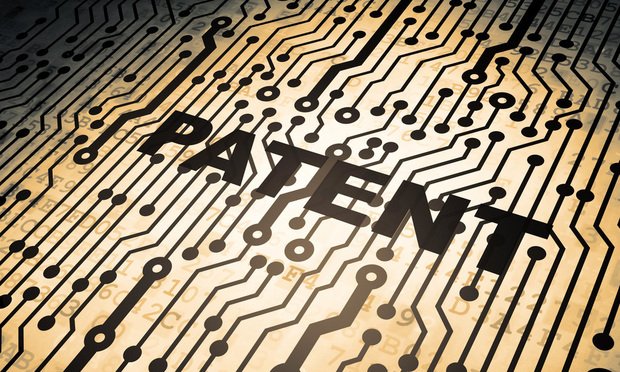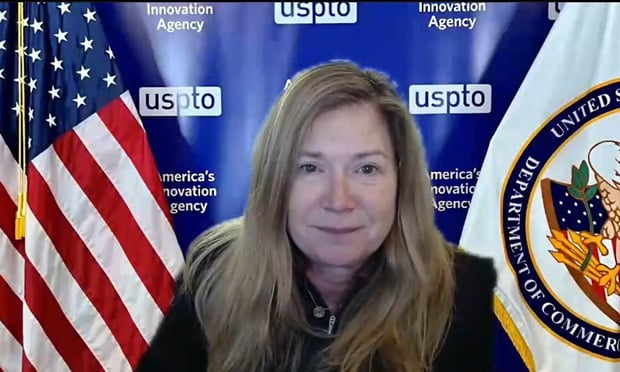Features

Can Artificial Intelligence Patents Overcome §112 Requirements?, Part 2
Part Two of a Two-Part article While the last decade has seen a dramatic increase in the number of AI patents, such patents face difficulty in overcoming the patent-eligibility challenges under §101 and Alice. Section 101, however, is not the only hurdles AI patents must overcome. Section 112, with its written description, enablement, and definiteness requirements, presents additional obstacles.
Features

Can Artificial Intelligence Patents Survive Alice?
Part One of a Two-Part Article Under the current Alice framework, those attempting to patent AI innovations face an uphill battle. But, as the caselaw demonstrates, inventors and patent drafters can take steps to reduce the risk of AI patent claims being invalidated as abstract ideas.
Features

Director Vidal's Impact On the PTAB: Big Changes and More On the Way
Perhaps the largest impact that Director Vidal has had upon the PTAB is has been via Director Reviews. The U.S. Supreme Court mandated Director Reviews to correct procedural defects in the way that administrative patent judges are appointed to the PTAB.
Features

Protecting Artificial Intelligence Inventions: Takeaways from 'IBM v. Zillow' from a Patent Drafting Perspective
Part Two of a Two-Part Article In Part One, we discussed the IBM v. Zillow case, where IBM sued Zillow for infringing on seven IBM's patents directed to artificial intelligence (AI) algorithms for estimating property value. The focus was on the difficulties in establishing patent infringement on specific AI algorithms, as well as the strategic advantages of including additional patent claims that target ancillary features of an AI system. In this segment, we will analyze the claims made in the IBM v. Zillow case and present some tips for drafting AI-related claims from the perspective of patent infringement.
Features

Protecting Artificial Intelligence Inventions: Takeaways from 'IBM v. Zillow' from a Patent Drafting Perspective
Part One of a Two-Part Article This two-part article sheds light on several important aspects of patents on AI technology. In Part One, we provide a general overview of the IBM v. Zillow lawsuit and discusses strategies to diversify patent portfolios to maximize protection on AI-related technology.
Features

A Diverse Patent Portfolio Better Protects Artificial Intelligence Inventions
Takeaways from 'IBM v. Zillow' from a Patent Drafting Perspective Part Two of a Two-Part Article In Part One of this article we discussed the IBM v. Zillow case, where IBM sued Zillow for infringing on seven IBM's patents directed to artificial intelligence (AI) algorithms for estimating property value. The focus was on the difficulties in establishing patent infringement on specific AI algorithms, as well as the strategic advantages of including additional patent claims that target ancillary features of an AI system. In this segment, we analyze the claims made in the Zillow case and present some tips for drafting AI-related claims from the perspective of patent infringement.
Columns & Departments

IP News
Federal Circuit Examines the Analogous Art Test Federal Circuit Affirms PTAB's Finding of Prior Invention
Features

How to Diversify the Pool of Inventors — and Improve Innovation
Efforts to diversify the inventive population will not only foster innovation across a wide range of businesses and industries but will also help greatly expand the pool of inventors across racial, gender and ethnic categories, and the country as a whole will realize numerous benefits.
Features

A Secondment Can Help Grow Your IP Practice
Although your company may have an in-house IP attorney, your company may still need temporary help from an outside law firm to develop your company's patent portfolio and to solve your company's need for temporary help with minimal need for training and financial investment. If you do not have the budget to hire an in-house IP attorney, the solution is to try a secondment — an attorney from an outside law firm temporarily joins your in-house legal team as a "secondee" on a part-time or full-time basis.
Columns & Departments

IP News
Federal Circuit: No Patent Term Adjustments When Claims Change Federal Circuit: Proceeding Need Not Be Terminated Upon Request
Need Help?
- Prefer an IP authenticated environment? Request a transition or call 800-756-8993.
- Need other assistance? email Customer Service or call 1-877-256-2472.
MOST POPULAR STORIES
- How Secure Is the AI System Your Law Firm Is Using?What Law Firms Need to Know Before Trusting AI Systems with Confidential Information In a profession where confidentiality is paramount, failing to address AI security concerns could have disastrous consequences. It is vital that law firms and those in related industries ask the right questions about AI security to protect their clients and their reputation.Read More ›
- Pleading Importation: ITC Decisions Highlight Need for Adequate Evidentiary SupportThe International Trade Commission is empowered to block the importation into the United States of products that infringe U.S. intellectual property rights, In the past, the ITC generally instituted investigations without questioning the importation allegations in the complaint, however in several recent cases, the ITC declined to institute an investigation as to certain proposed respondents due to inadequate pleading of importation.Read More ›
- The Binding Effect of Plea Agreements In White Collar CrimesFederal plea agreements sometimes state explicitly that they are limited to that one office and do not bind other U.S. attorney's offices. In this article, we discuss the circuit courts' competing approaches to interpreting the binding effect of plea agreements and the Department of Justice policy.Read More ›
- Compliance and Third-Party Risk ManagementTo gauge the level of risk and uncover potential gaps, compliance and privacy leaders should collaborate to consider how often they are monitoring third parties, what intelligence they are gathering with and about their partners and vendors, and whether their risk management practices have been diminished due to cost and resource constraints.Read More ›
- Authentic Communications Today Increase Success for Value-Driven ClientsAs the relationship between in-house and outside counsel continues to evolve, lawyers must continue to foster a client-first mindset, offer business-focused solutions, and embrace technology that helps deliver work faster and more efficiently.Read More ›
